Purple flowers can add a splash of color to your yard. However, it can be challenging to find the best fit for your garden, so I’ve put together this list of 21 ground covers with purple flowers.
Here are 21 ground covers with purple flowers to spice up your garden:
- Horned Pansy (Viola cornuta)
- Creeping Thyme (Thymus serpyllum)
- Creeping Lilyturf (Liriope spicata)
- Creeping Phlox (Phlox stolonifera)
- Royal Candles (Veronica spicata)
- Barrenwort (Epimedium)
- Bugleweed (Ajuga reptans)
- Lithodora (Glandora diffusa)
- Wishbone Flower (orenia fournieri)
- Common Periwinkle (Littorina littorea)
- Spotted Dead Nettle (Lamium maculatum)
- Dalmatian Bellflower (Campanula portenschlagiana)
- Ice Plant (Delosperma)
- Society Garlic (Tulbaghia violacea)
- Wild Violet (Viola odorata)
- Perennial Verbena
- Wall Germander (Teucrium chamadrys)
- Nepeta Catmint (Nepeta racemosa)
- Creeping Mazus (Mazus reptans)
Let’s take a closer look at these ground covers, one by one. You’re bound to find one that fits well with your garden.
1. Horned Pansy (Viola cornuta)
Popularly known as horns, the flowers of the horned pansy are purple with blue spots. They have long blooming seasons that extend from spring to summer. Horned pansy grows well in shaded areas with moist soil.
People like this ground cover for its resistance to deer and rabbits, along with its ability to spread, making it perfect for novice gardeners. It also has the advantage of working well as a border plant or ground cover for bigger objects, such as trees and rocks.
Watering is necessary for horned pansies, especially the first few days after planting. Once they become established, you can cut back to watering them once or twice a week. Fertilize in early spring and in late summer with a balanced fertilizer to encourage blooming.
- Zone: 7 through 10.
- Size: Up to 20 inches (50.8 cm) in height and spread.

2. Creeping Thyme (Thymus serpyllum)
The Creeping Thyme is an evergreen plant, ideal for year-round ground cover. It has small leaves with a purple flower that blooms in early spring. It reaches about 6 inches (15.24 cm) tall, so it’s perfect if you’re looking to cover a lot of ground quickly. The best part about this plant is that it does well in a wide range of soil and climatic conditions, making it a go-to option for many gardeners.
Creeping thyme is also easy to care for. It needs full sun to partial sun and prefers well-drained soil. You can either plant it in the ground or in a pot. If you decide to plant it in the ground, make sure to place it somewhere where its roots will stay cool.
If you’re wondering whether this ground cover will survive the winter, the answer is yes. Creeping thyme is very hardy and can survive in colder climates as long as it doesn’t experience a freeze. The idea is to give the plant some protection in the foot area so the roots don’t freeze.
You can find this non-invasive ground cover at your local garden center or in online stores. It’s usually very affordable.
- Zone: 4 through 9.
- Size: Up to 3 inches tall (7.62 cm).
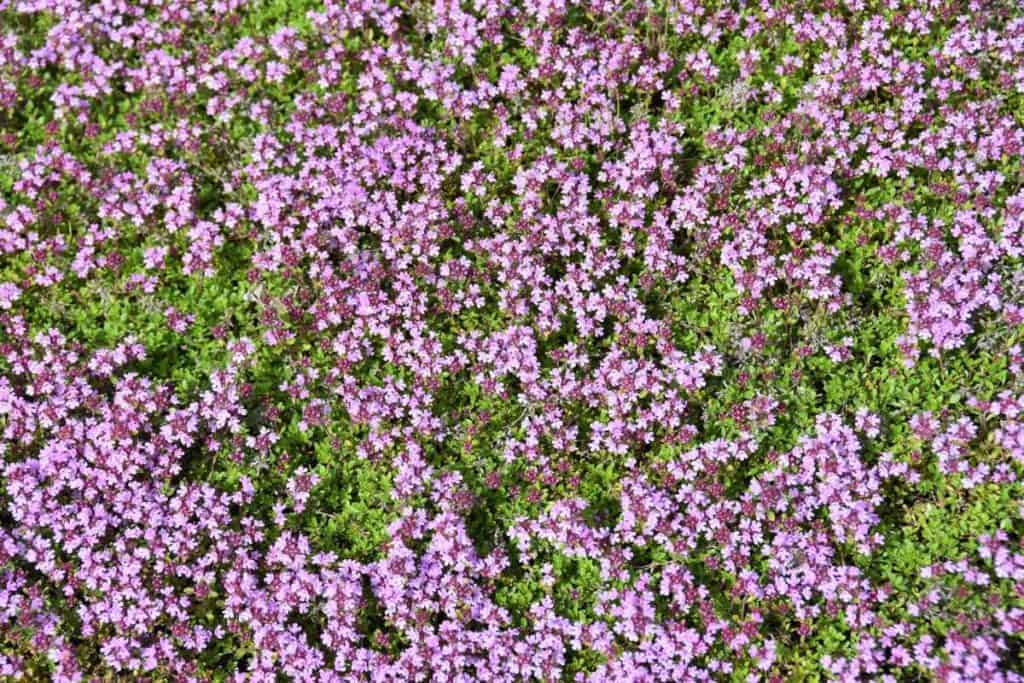
3. Creeping Lilyturf (Liriope spicata)
Creeping lilyturf is a carpet-forming ground cover with grass-like leaves and tiny, bell-shaped flowers that bloom purple in late spring. It is easy to mistake the flower color as a starry blue, but it appears purple on closer inspection.
Creeping lilyturf is not invasive. However, it is a fast-growing ground cover that can quickly fill in bare patches of soil. It’s a great ground cover for people with children and pet owners because it can be easily removed from areas where it is unwanted.
Lilyturf is also not fussy about soil conditions. It is usually planted as a lawn substitute because it requires little maintenance and will withstand relocation, repeated mowing, and some degree of trampling by people or pets.
- Zone: 4 through 10.
- Size: 6 to 10 inches tall (15.24 to 25.4 cm).
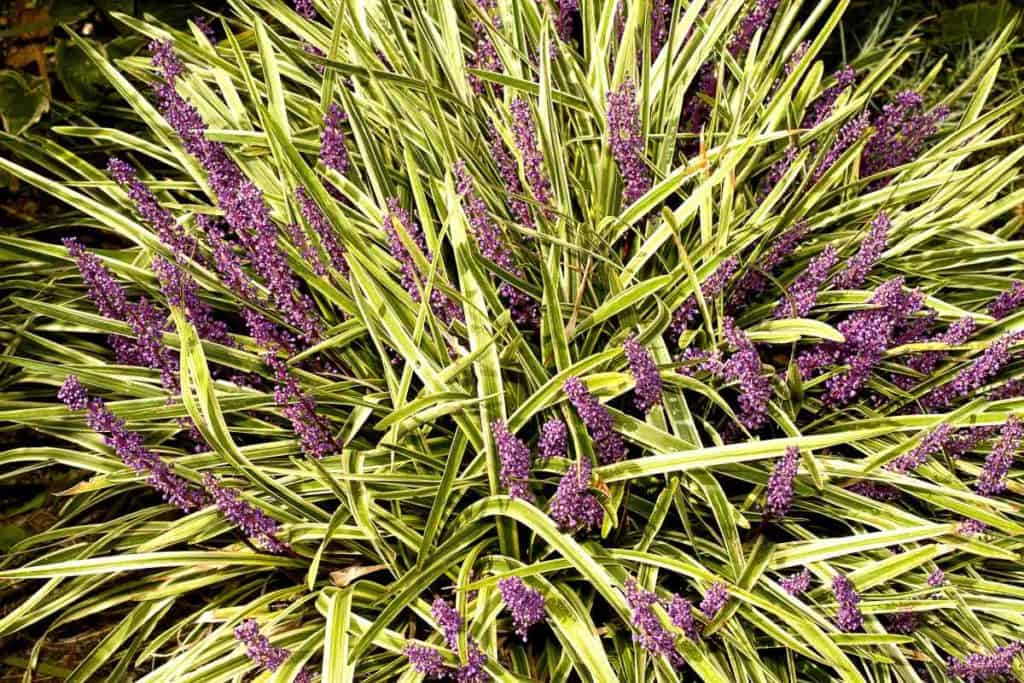
4. Creeping Phlox (Phlox stolonifera)
Creeping phlox is a perennial that forms mats of evergreen foliage. It produces small, star-shaped flowers in white, pink, and lavender shades from late winter to early spring. This plant does best in full sun but will tolerate partial shade. It prefers moist but well-drained soil.
Phlox spreads slowly by rhizomes (underground stems) and will fill nicely over time if given the opportunity. You want to space this plant eight to 12 inches (30.48 cm) apart for a fuller look.
- Zone: 3 through 9.
- Size: 6 to 12 inches (15.24 to 30.48 cm) tall and up to 18 inches (45.72 cm) wide.
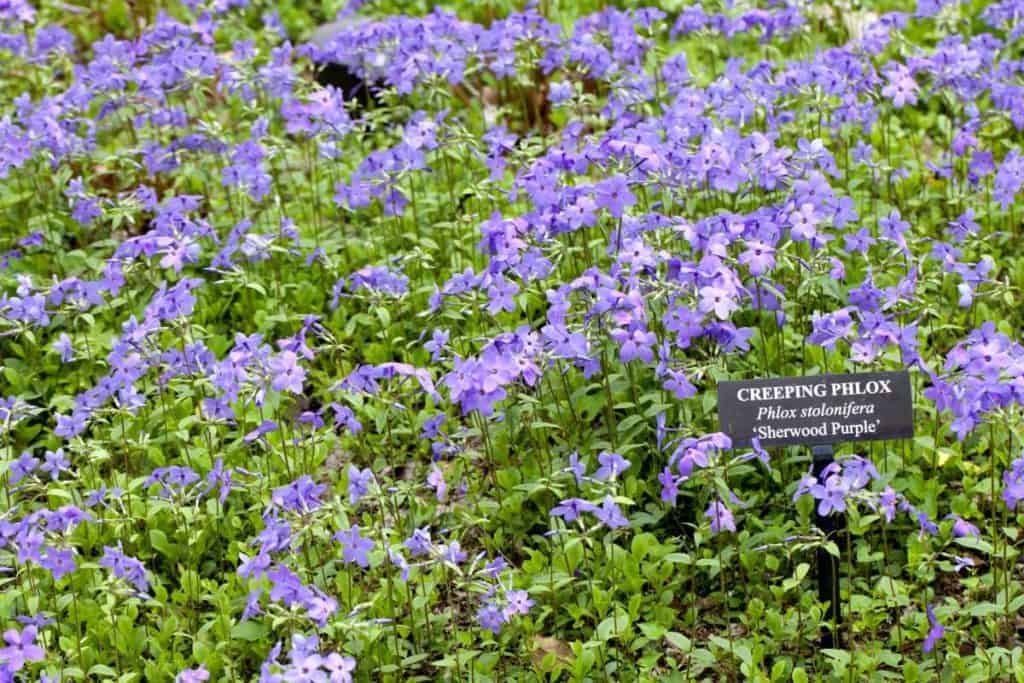
5. Royal Candles (Veronica spicata)
Aside from the charming name, this ground cover has other things going for it. It is densely packed with tiny lavender flowers that bloom in early summer. The foliage is delicate and forms a dense mass of greenery. It can choke weeds if planted in a lawn area where grass once grew.
Royal candles are tough, sturdy ground cover that grow best in soil with average moisture. It can handle some dryness, but it needs at least one good watering every week during the summer months. If the plant becomes too moist or is in an area where it receives constant standing water, it may struggle to survive.
- Zone: 3 through 8.
- Size: 15 to 18 inches (38.1 to 45.72 cm) tall and 15 inches (38.1 cm) wide.
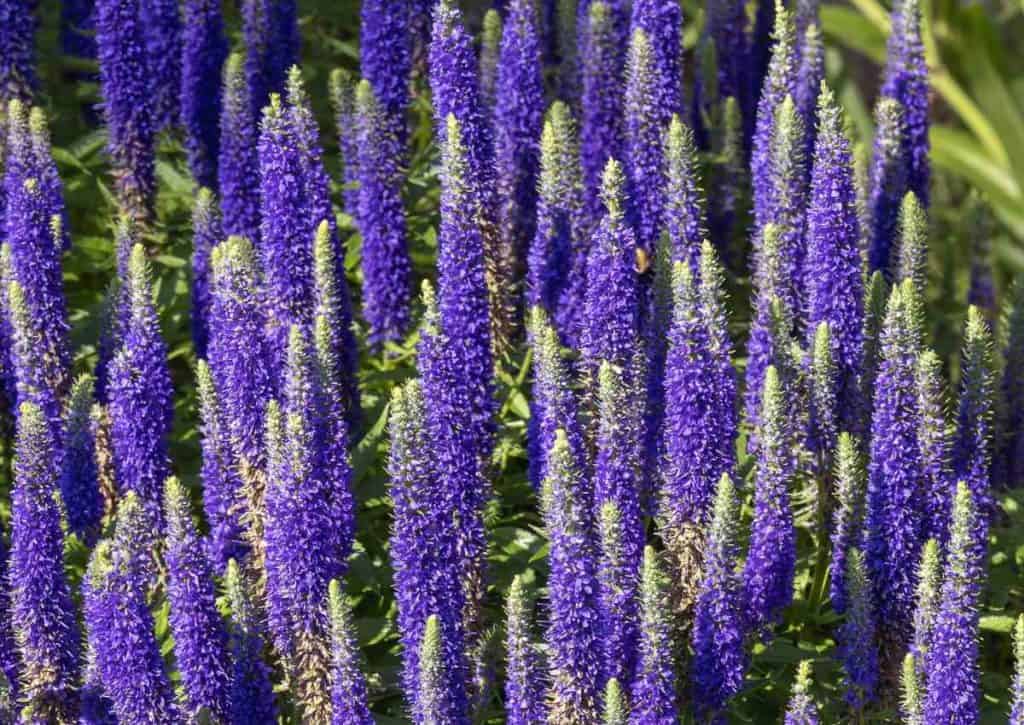
6. Barrenwort (Epimedium)
Barrenwort is an evergreen ground cover that blooms from late winter to early spring. It has small, purple flowers, and it grows in clumps.
Taking care of this plant is easy. It can tolerate full shade and partial sun, but it prefers dappled or light shade, and you should water the soil well when transplanting Barrenwort.
This ground cover is an excellent choice for large areas with dense foliage, but it can be aggressive and should not be planted near other plants or in small spaces.
This plant has no serious pest or disease problems, and it can be propagated by division in the spring.
- Zone: Barrenwort can be grown in zones five through eight.
- Light: Full shade to partial sun.
- Watering Needs: Keep the soil moist but not wet, and do not let it dry out between watering sessions.
- Fertilizing: Fertilize in the spring.
- Pruning: Trim as needed to maintain shape. Do not prune in late fall or winter.
- Size: 6 to 8 inches (15.24 to 20.32 cm).
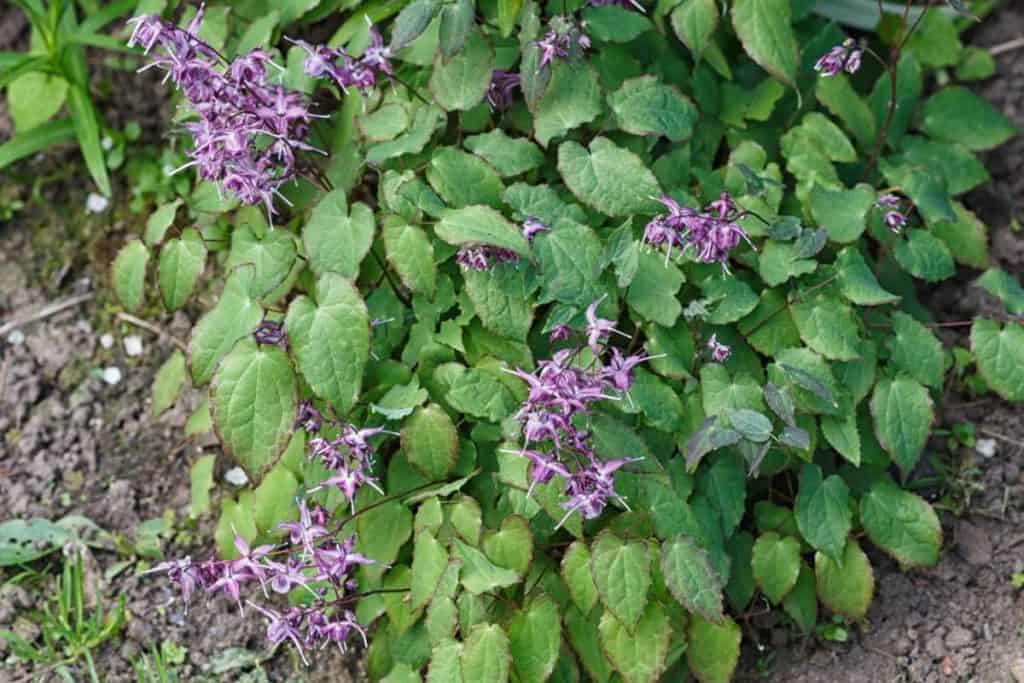
7. Bugleweed (Ajuga reptans)
Bugleweed is an evergreen perennial. It spreads quickly, forming thick ground cover mats that can get quite dense within just a few years. It is easy to grow and thrives in moist soil or partial shade.
This ground cover is not very picky about soil conditions and does well in shade or partial sun. There are different varieties of bugleweed, but most will grow between 8 and 12 inches (20.32 to 30.48 cm) high and spread between four and ten inches wide.
This ground cover is also resistant to rabbits, deer, and other pests, making it the perfect choice for people tired of keeping plants safe.
- Zone: 3 through 9.
- Size: 8 to 12 inches (20.32 to 30.48 cm) tall and 4 to 10 inches (10.16 to 25.4 cm) wide.

8. Lithodora (Glandora diffusa)
Lithodora is a flowering plant native to the Mediterranean region, growing mainly in dry areas such as at the edges of cliffs. And it is distinguished by its bold spikes of intense purple-blue flowers.
Lithodora is a perennial ground cover that requires very little care and can survive with small amounts of water, but it requires full sun. It will flourish even when the soil has almost no organic material.
This ground cover prefers stony or sandy soil and will not do well in clay or loam. It can survive extreme heat but may struggle with wet conditions unless it is in well-drained soil.
- Zone: 6 through 10.
- Size: 6 to 10 inches (15.24 to 25.4 cm) tall up to 36 inches (91.44 cm) wide.
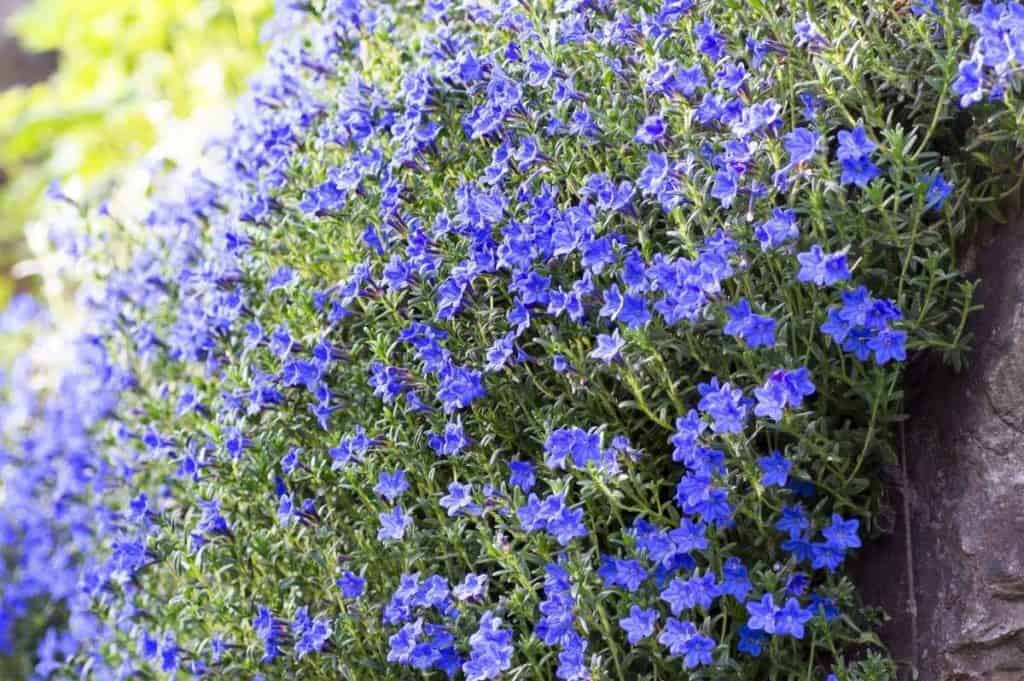
9. Wishbone Flower (orenia fournieri)
The wishbone flower is native to the eastern United States, where it grows in shady areas like forests and woodland edges.
It has delicate green leaves that are highly aromatic, with an unusual scent similar to lilacs. The flowers grow in clusters at the top of long stems, reaching 12 inches (30.48 cm) tall. These flowers have five petals each and come in shades of purple or lavender.
Wishbone flower blooms throughout the summer months and attracts hummingbirds due to its nectar-filled blossoms. Its unique shape and vibrant colors make for a beautiful cut flower when placed into bouquets.
- Zone: 2 through 11.
- Size: 12 inches (30.48 cm) tall and 9 inches (22.86 cm) wide at maturity.

10. Common Periwinkle (Littorina littorea)
Common periwinkle is a low-growing evergreen plant with light blue flowers. The plant does not bloom for long before it goes dormant, but the foliage remains attractive all year round. This ground cover is excellent for rock gardens and borders where the soil needs to be well-drained.
It makes a perfect choice for containers and hanging baskets as it has no root system that will compete with other plants or cause drainage problems.
Common periwinkle thrives in dry shade or partial shade locations. It will thrive even when there is little sun exposure, making it perfect for planting under trees. Once established, it is also drought-tolerant, making it a good choice for xeriscaping projects.
- Zone: 4 through 8.
- Size: 6 inches (15.24 cm) across.
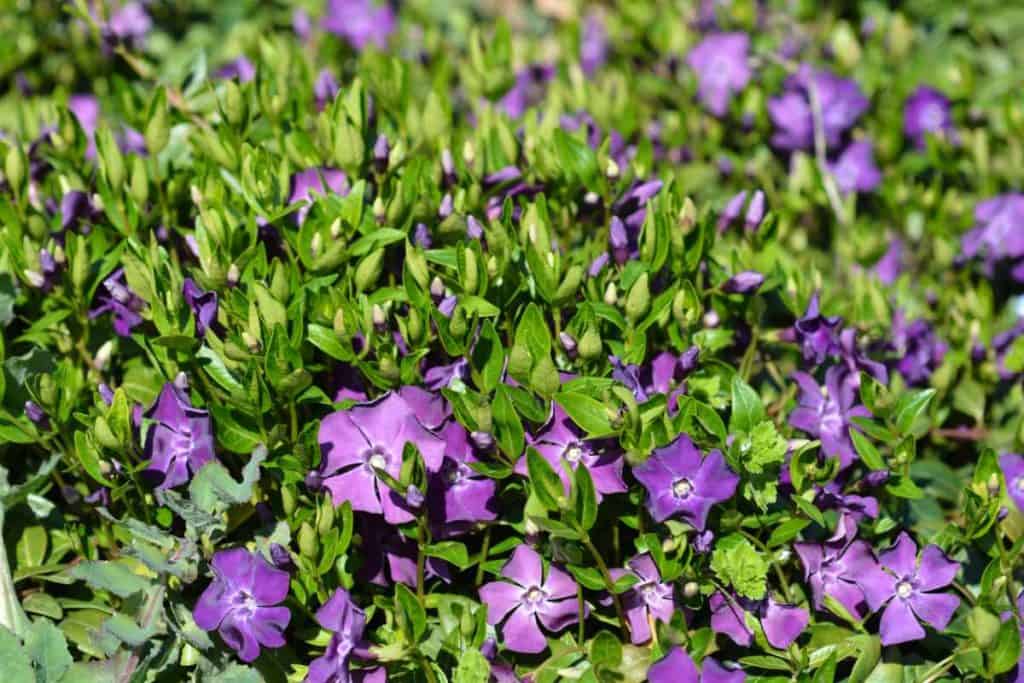
11. Spotted Dead Nettle (Lamium maculatum)
The spotted dead nettle is a beautiful ground cover for shady spots in the garden. It grows about 12 inches (30.48 cm) tall and has dark purple flowers that bloom from late summer to early fall. This plant thrives in wet, moist soil with partial shade.
It’s one of the few plants that will grow well under trees and large shrubs – a perfect choice for those who want an attractive ground cover for areas without much light.
- Zone: 3 through 8
- Size: 6 to 12 inches (15.24 to 30.48 cm).

12. Dalmatian Bellflower (Campanula portenschlagiana)
Dalmatian bellflower is a ground cover found in the wild throughout central and eastern Europe.
This perennial plant has bright blue flowers that bloom from June to September, attracting bees, butterflies, and other pollinators. The foliage is also attractive, with dark green leaves covered in white spots.
Once established, dalmatian bellflower grows best in moist soil but it can tolerate dry conditions. It’s an excellent choice for areas that receive full sun to partial shade.
- Zone: 3 through 8.
- Size: 6 to 12 inches (15.24 to 30.48 cm) tall and 12 to 18 inches (30.48 to 45.72 cm) wide.
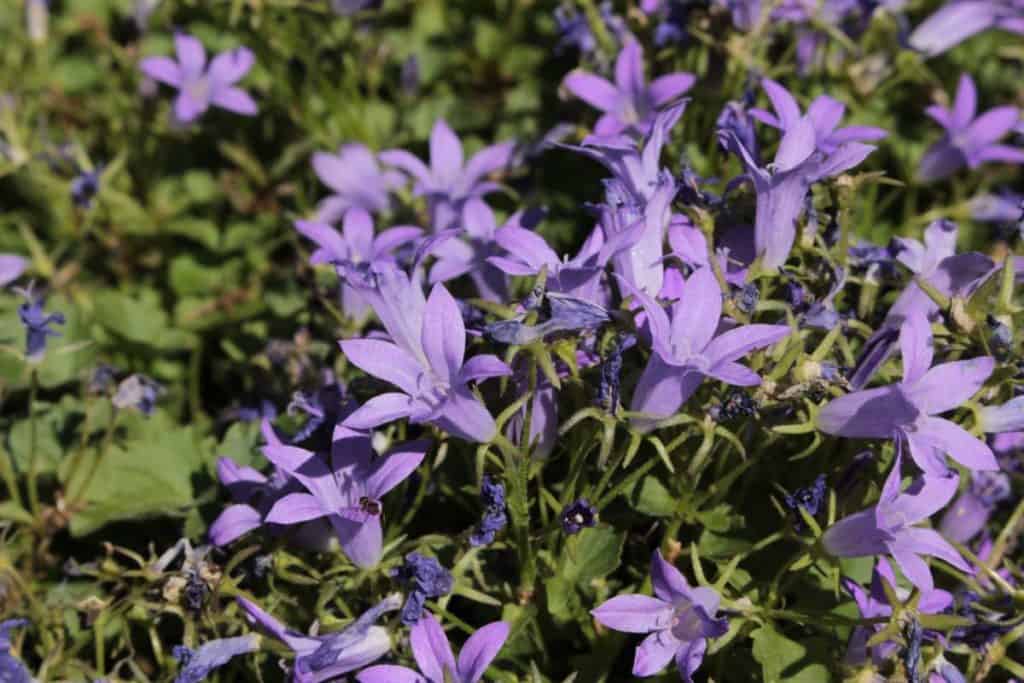
13. Ice Plant (Delosperma)
Ice plant is a succulent that grows in colder climates. It has small, round leaves and produces clusters of small, star-shaped flowers in white, pink, or purple shades. This flowering plant is drought-tolerant and does well in sandy soils. It can be used as a ground cover or planted in containers.
Unfortunately, this is one of those plants that require special care to survive the winter.
- Zone: 4 and 5.
- Size: 3 to 6 inches (7.62 to 15.24 cm) tall, 12 to 24 inches (30.48 to 60.96 cm) wide.

14. Society Garlic (Tulbaghia violacea)
Society garlic is a ground cover that has a unique and beautiful look. It’s also one of the best plants for naturalizing your garden. The plant is resistant to deer, rabbits, moles, and it germinates quickly from seeds or cuttings. If you’re looking for an attractive purple flowering groundcover with low maintenance needs, then society garlic should be on your list.
The issue with this plant is that the flowers only last a few weeks. Still, it’s an attractive plant. The leaves of society garlic go from green to reddish tones as they mature, and the flowers are purple with white centers.
- Zone: 8 through 10.
- Size: 12 to 20 inches (30.48 to 50.8 cm) high, 9 to 12 inches (22.86 to 30.48 cm) wide.
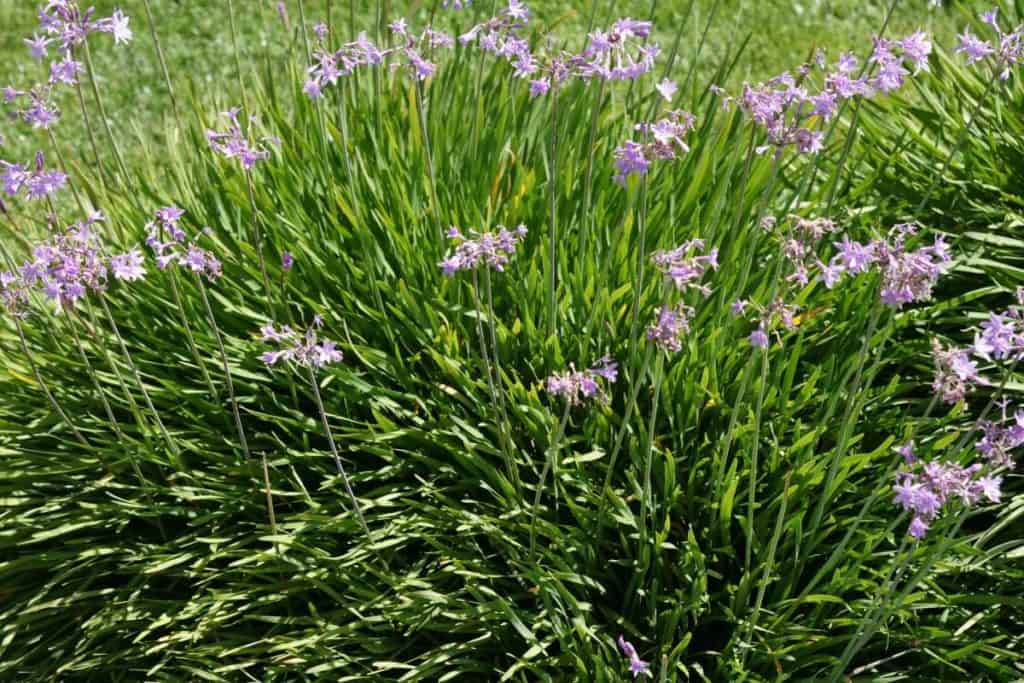
15. Wild Violet (Viola odorata)
Wild violets are the perfect little ground cover for spring and summer. They bloom in late March, April, and May with beautiful clusters of lavender-blue flowers on top of slender stems that grow to about six inches tall. You can plant them as a low-growing groundcover or use them in flower beds and around trees, where they will form a lovely carpeting effect.
Wild violets prefer moist soil but don’t require additional watering once established, making them great for xeriscaping. It’s also important to note that because wild violets do not have extensive root systems like some other plants, you should only dig up part of the plant when transplanting it instead of digging it all up at once.
- Zone: 3 through 9.
- Size: 2 to 12 inches (5.08 to 30.48 cm) tall.

16. Perennial Verbena
Perennial verbena is a ground cover that can be used in many different ways in your garden. It has a mounding habit and produces clusters of purple flowers all season long. The green leaves add a nice contrast to its flowers.
Perennial verbena grows best in full sun but will tolerate partial shade, and it does well in moist soil. This plant is drought-tolerant and deer-resistant, making it a good choice for those who want a low-maintenance ground cover.
- Zone: 5 through 9.
- Size: 6 to 12 inches (15.24 to 30.48 cm) tall, 12 to 18 inches (30.48 to 45.72 cm) wide.
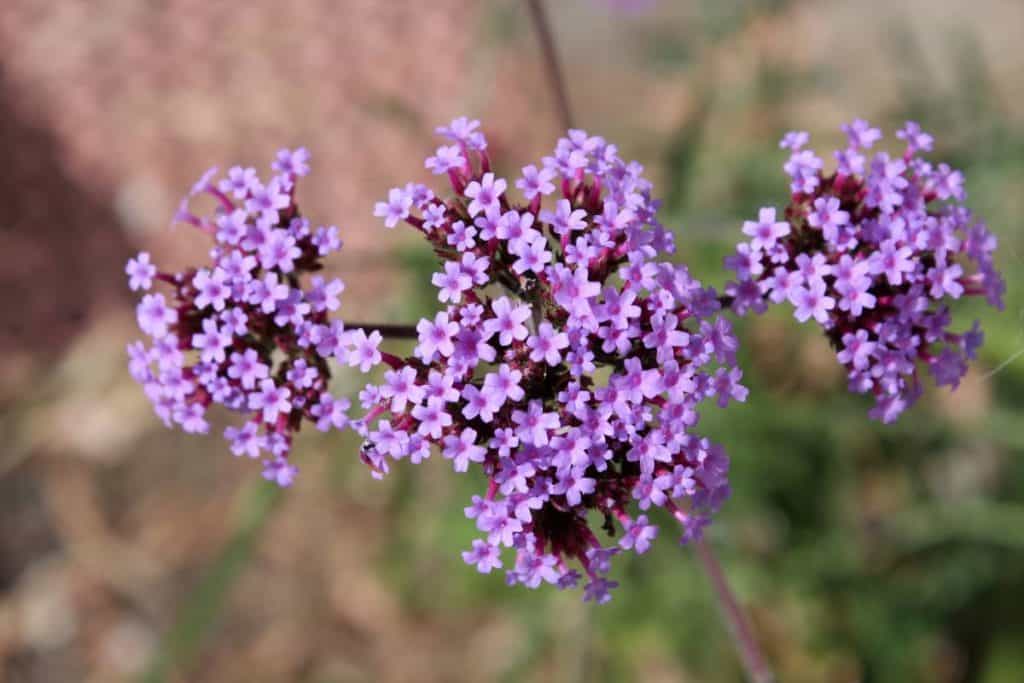
17. Wall Germander (Teucrium chamadrys)
Wall germander is a perennial ground cover perfect for dry, sunny areas. It grows in clumps and produces spikes of purple flowers in the early summer months. If you want to add some color to your garden without planting grass, this plant may be just what you need.
You can also mix wall germander with other perennials and plants, allowing it to grow between others. It does best when planted in well-draining soil that is kept moist but not wet. It can do well in partial shade or full sun.
- Zone: 5 through 9.
- Size: 12 to 18 inches (30.48 to 45.72 cm) tall, 2 feet (0.6 meter) wide.
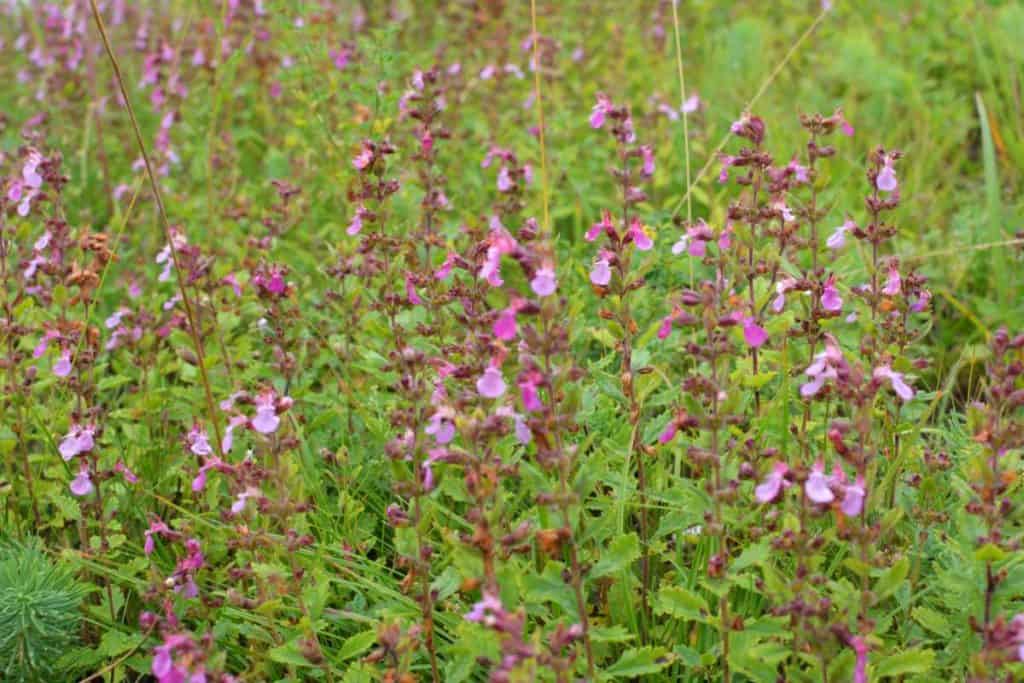
18. Nepeta Catmint (Nepeta racemosa)
Nepeta catmint is a ground cover that can grow in full sun and in shade. Its leaves are about one inch long, and the flowers have an intense fragrance. This plant grows to about a foot tall, and it spreads by runners, which means it will fill in any space you give it quickly.
This ground cover blooms from June through September peaks in July-August, with three flower spikes per stem. The name nepeta comes from Greek mythology: the goddess Aphrodite was said to use this herb as one of her sacred plants. It is often used as a medicinal herb for its calming properties.
- Zone: 3 through 9.
- Size: 6 to 12 inches (15.24 to 30.48 cm) tall, up to 8 feet (2.43 meter) wide.

19. Creeping Mazus (Mazus reptans)
Creeping Mazus is an excellent ground cover for shady places. It can also be used as a border along your driveway or walkway. It prefers moist, well-drained soil but still does well in dry areas if you water it occasionally.
This plant grows about three inches tall and spreads out to form clumps up to 24 inches wide. The leaves are tiny, round, and dark green. During the springtime, it produces clusters of three-petaled flowers ranging from white with yellow centers to deep purple mixed with white. Its flowers usually bloom in April or May, followed by small berries that ripen black.
- Zone: 5 through 8.
- Size: 2 to 4 inches tall (5.08 to 10.16 cm), 10 to 24 inches (25.4 to 60.96 cm) wide.


